3 OpenMP
3.1 Modification of Serial Code
Based on multithreading, the main principle of OpenMP is adding preprocessor direc-
tive #pragma omp to fork multiple thread and perform the following clause in parallel.
The key part for parallelization is the FFT function. Of course, some other part like
pre-pocessing will also be parallel if they do not have data dependencies.
In the serial code(Figure. 4), we can find that variable j and k in two for-loops from line
8 to line 10 actually have no dependency. If we make a copy of array x we can also
overcome the data dependencies.
f , cpx om [ ] ) { / / f ==1 IDFT ,
f ==0 DFT
f o r shared ( x , pos )
i f ( i
3.2 Results
As is shown in the Figure. 6, the acceleration of OpenMP is not as good as I expected.
The best result here is that about 2.3 times acceleration when n = 106 and T hread = 32.
Only parallelizing the inner loop of FFT, clearly is not enough.
Figure 6: Time consumption
6
�
4 CUDA
4.1 cuFFT
The most time-consumption part of FFT is complex number calculation, while GPU
computing with SIMD pattern can perfectly solve this problem. However, setting the
thread and block number to achieve the best performance could be troublesome so I
use CUDA additional library, cuFFT[1], in which the FFT function has been encapsuled
and can be used as below(Figure. 7).
. . .
1 cudaMalloc ( ( void ∗∗)&a , s i z e ) ;
2 cudaMemcpy ( a , h a , size , cudaMemcpyHostToDevice ) ;
3
4 c u f f t H a n d l e plan ;
5 c u f f t P l a n 1 d (& plan ,
6 cufftExecZ2Z ( plan , a , a , CUFFT FORWARD ) ;
7
8 cufftExecZ2Z ( plan , a , a , CUFFT INVERSE ) ;
9 c u f f t D e s t r o y ( plan ) ;
t , CUFFT Z2Z , 1 ) ;
. . .
Figure 7: cuFFT
Other computations such as multiplication and convertion of answers from complex to
integer are clearly SIMD pattern and can be written in following form(Figure. 8).
g l o b a l
cufftDoubleComplex ∗b ){
void vector mul ( cufftDoubleComplex ∗a ,
const
const
f o r
i n t numThreads = blockDim . x ∗ gridDim . x ;
i n t
( i n t
threadID= b l o c k I d x . x∗ blockDim . x+ threadIdx . x ;
i = threadID ;
i += numThreads ) {
i < T [ 0 ] ;
cuDoubleComplex c = cuCmul ( a [ i ] , b [ i ] ) ;
a [ i ] = make cuDoubleComplex ( cuCreal ( c )
/ T [ 0 ] ,
cuCimag ( c )
/ T [ 0 ] ) ;
1
2
3
4
5
6
7
8
9
}
10 }
. . .
11
12 cudaGetDeviceProperties (& prop , 0 ) ;
13 vector mul <<>>(a , b ) ;
/ prop . maxThreadsPerBlock + 1 ,
Figure 8: Other kernel functions
7
�
4.2 Result
As is shown in Table. 2, the acceleration increase with n and is nonlinear compare
to log2n. The acceleration can reach 11 when n = 225, using only a single Tesla P40.
Nevertheless, due to the memory limit of GPU, it’s not possible to compute when n > 225
n
serial(ms)
68.2045
123.2825
249.612
551.473
943.8755
2098.7495
4793.458
9232.303
21197.706
cufft(ms)
acceleration
329.971
0.206698233
32768
414.499
0.297425024
65536
395.863
0.630550934
131072
446.309
1.235631089
262144
465.259
2.028711267
524288
549.251
3.821108606
1048576
791.055
6.059579001
2097152
1136.544 8.123137729
4194304
8388608
2093.241 10.12673951
16777216 41702.4025 3619.876 11.52039539
33554432 85226.7815 7373.329 11.55879255
0.263560079
100000
1000000
1.734862321
10000000 12499.5892 2840.646 4.400262525
82.952
742.522
314.737
428.001
Table 2: cuFFT results
Figure 9: Accleration vs log2n
8
�
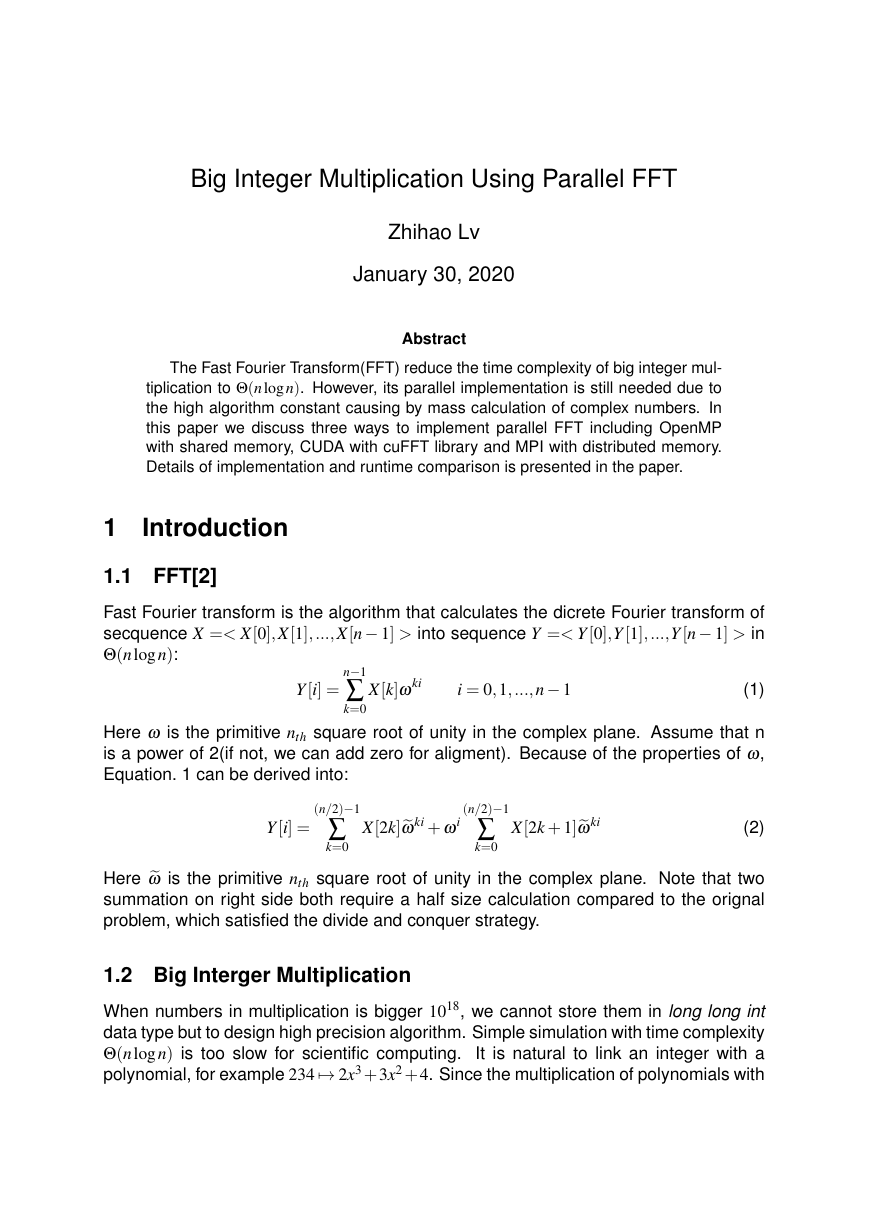
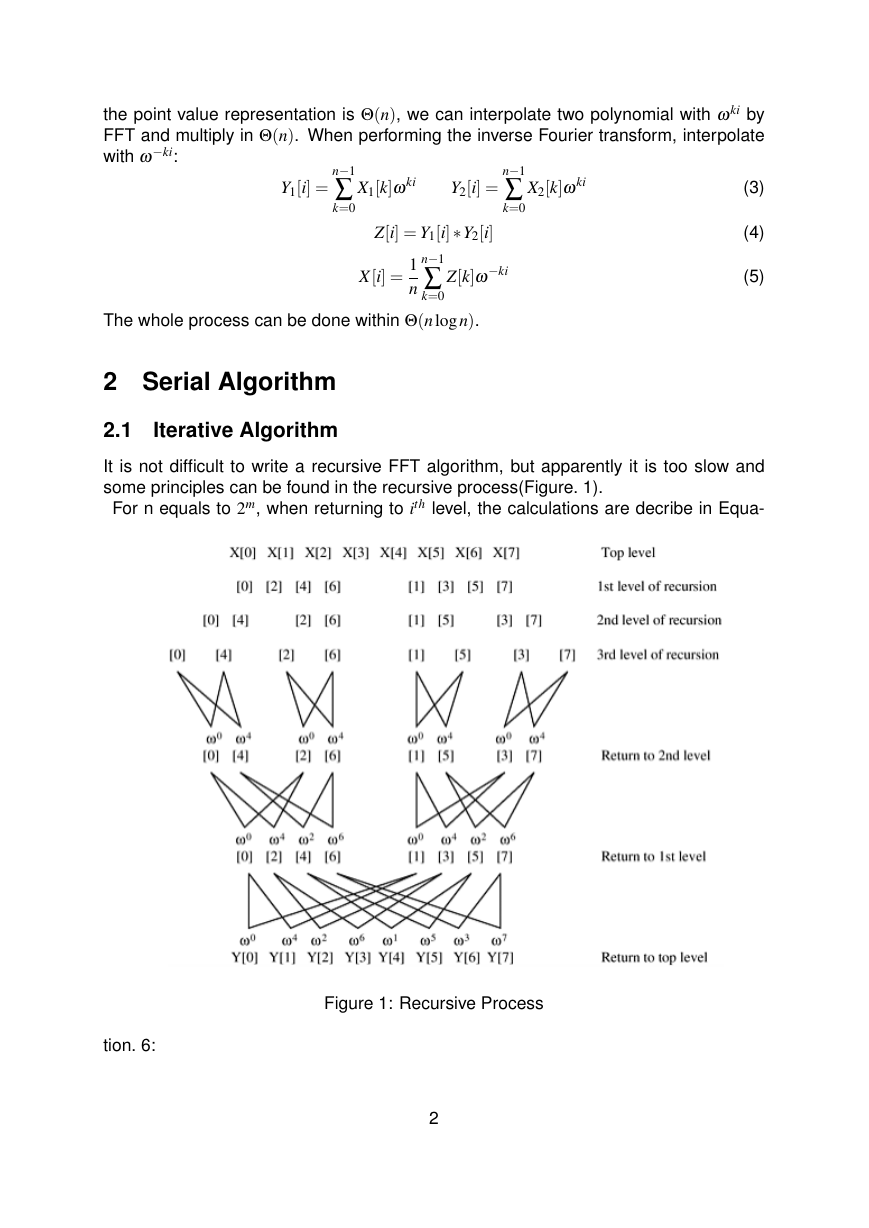
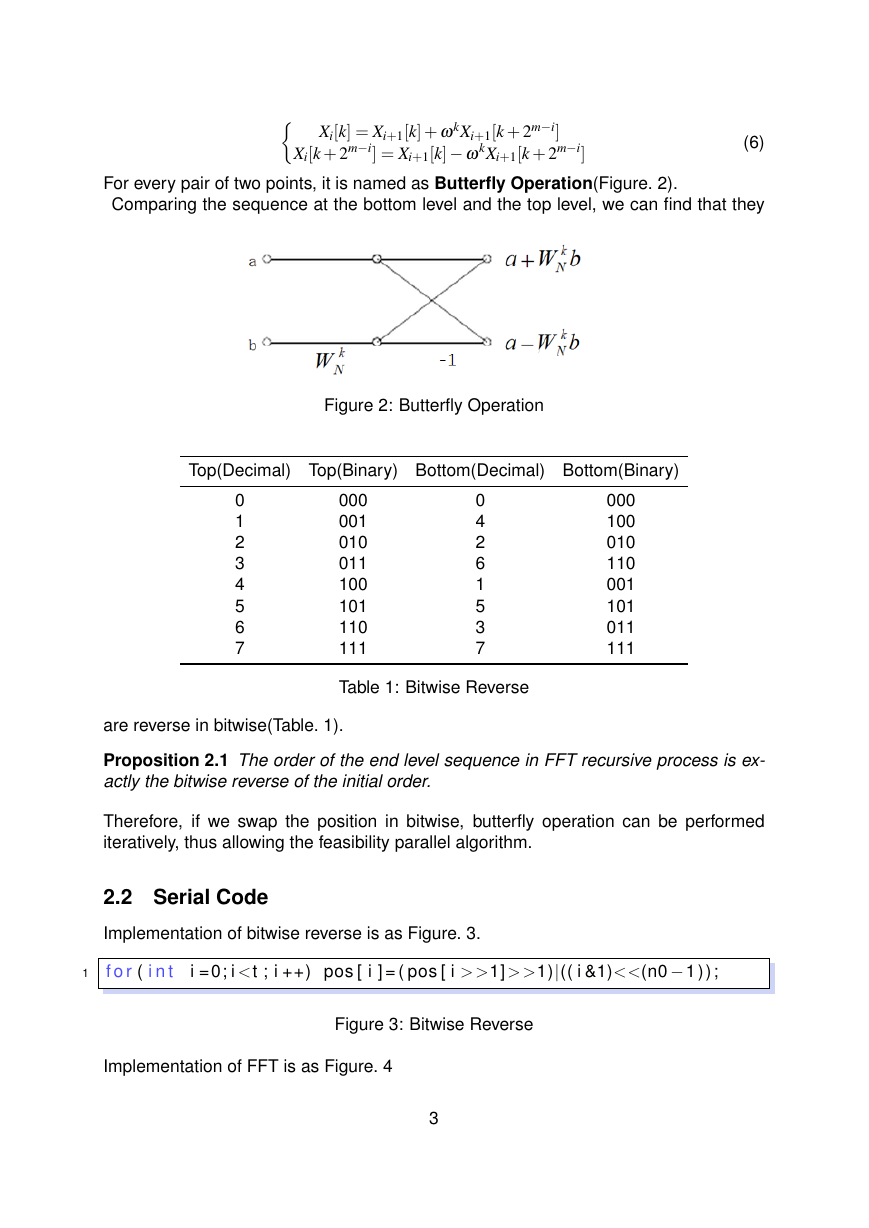
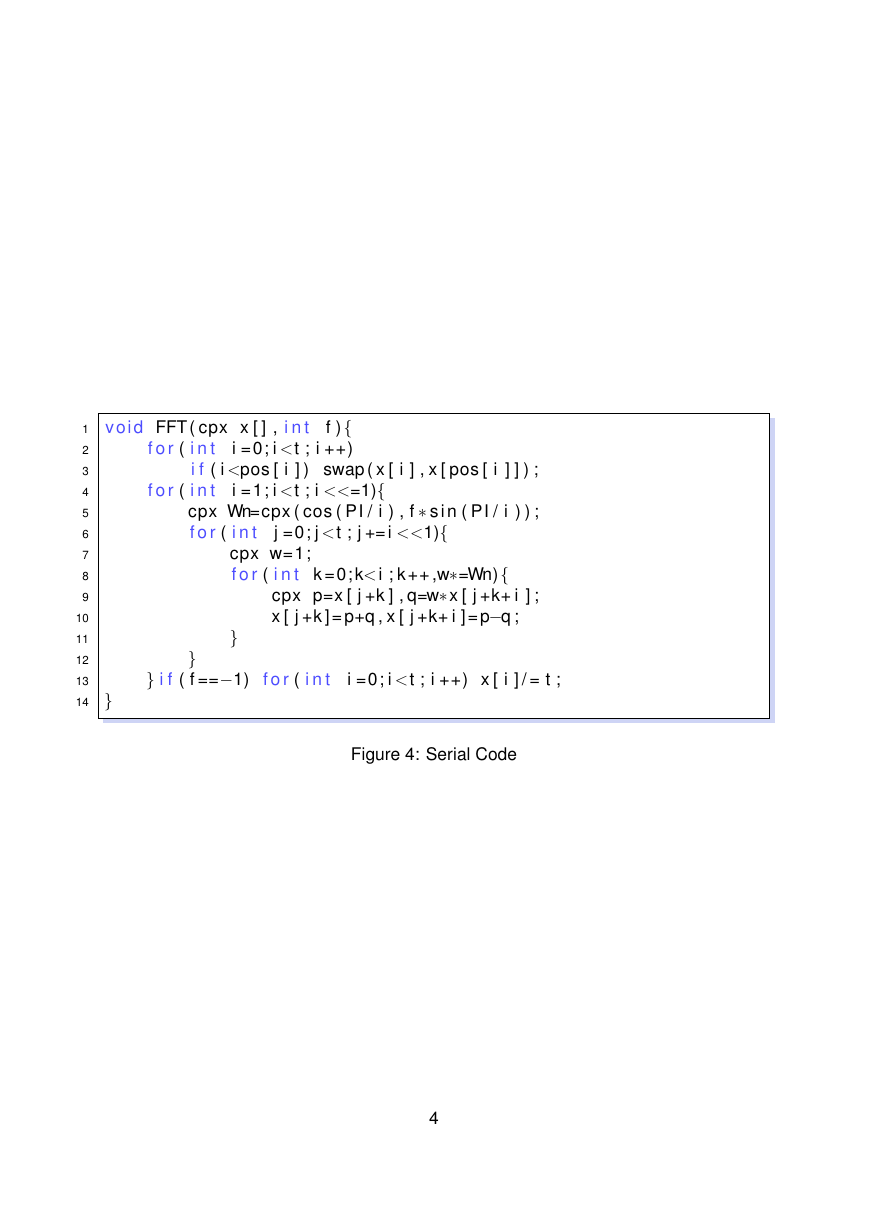
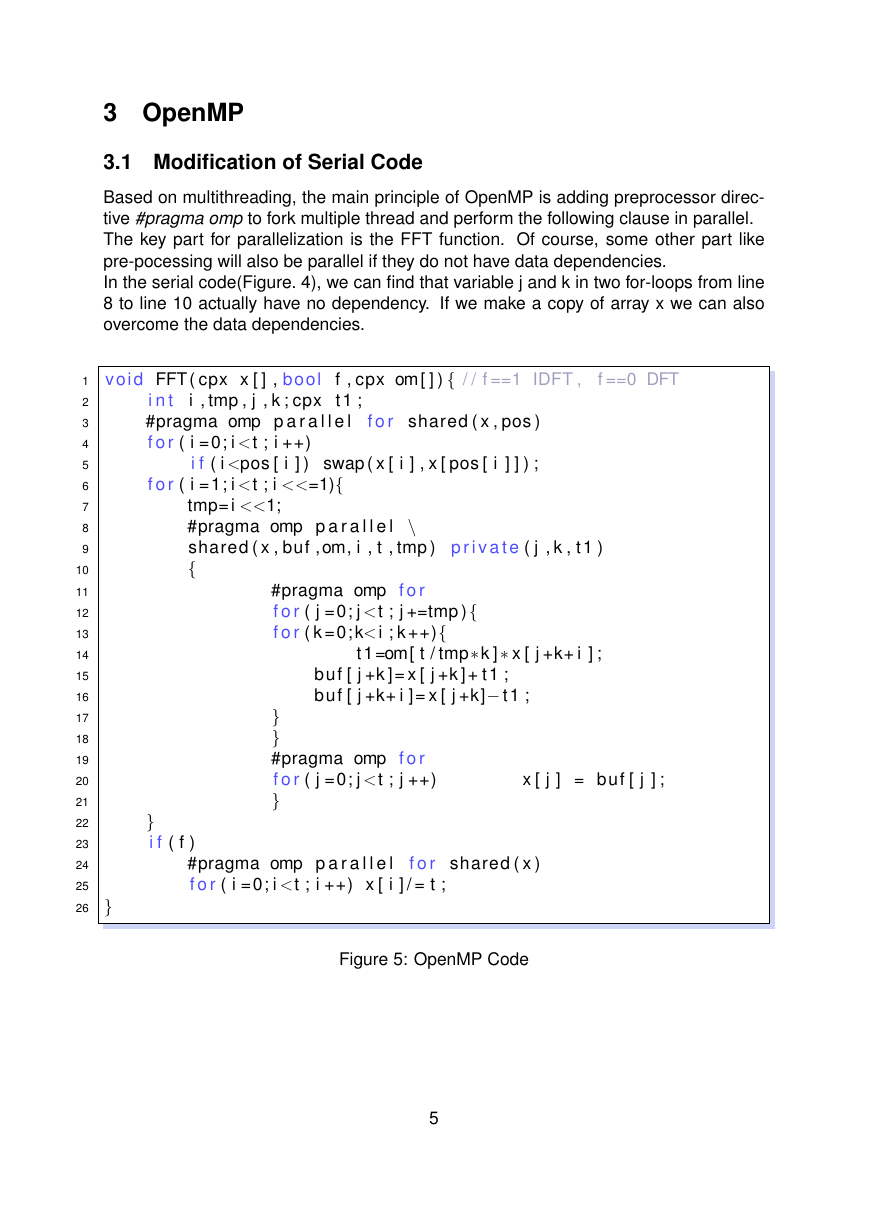
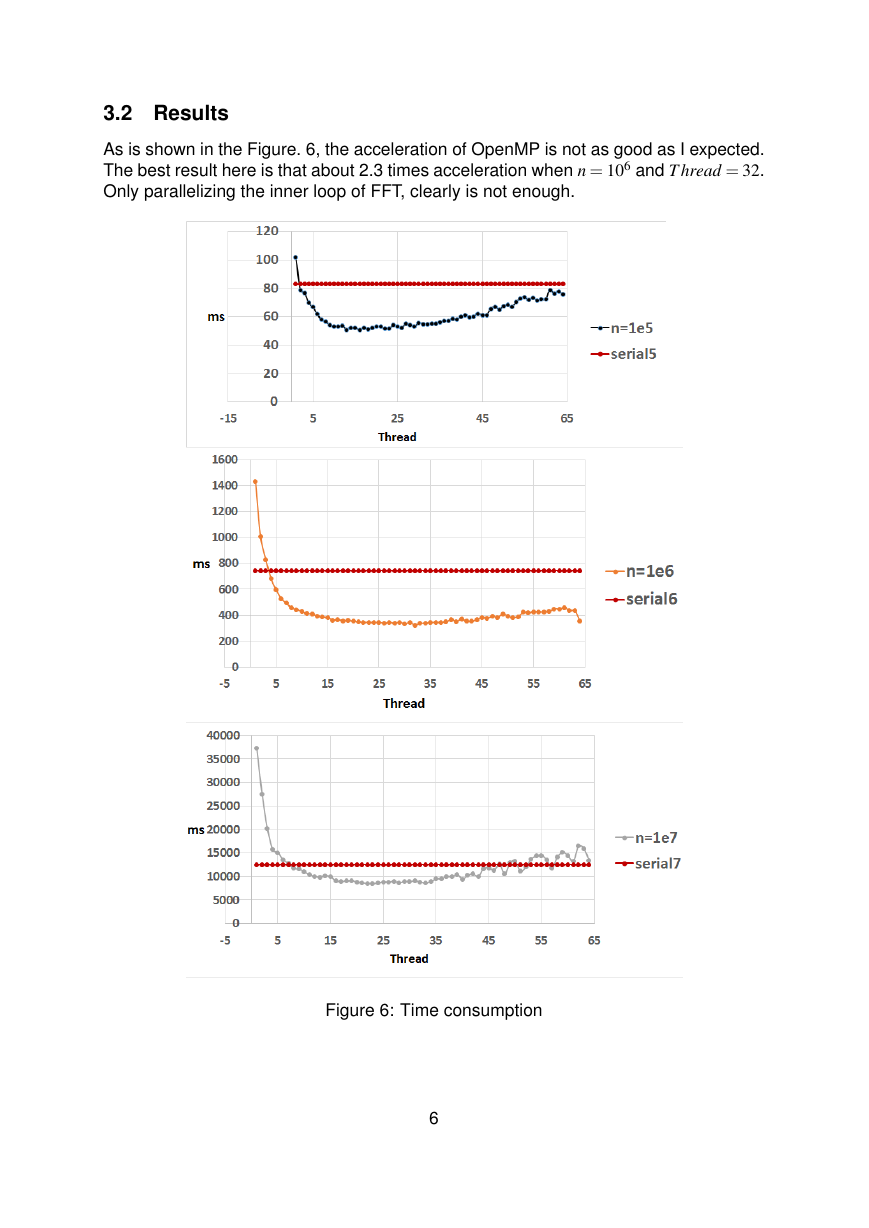
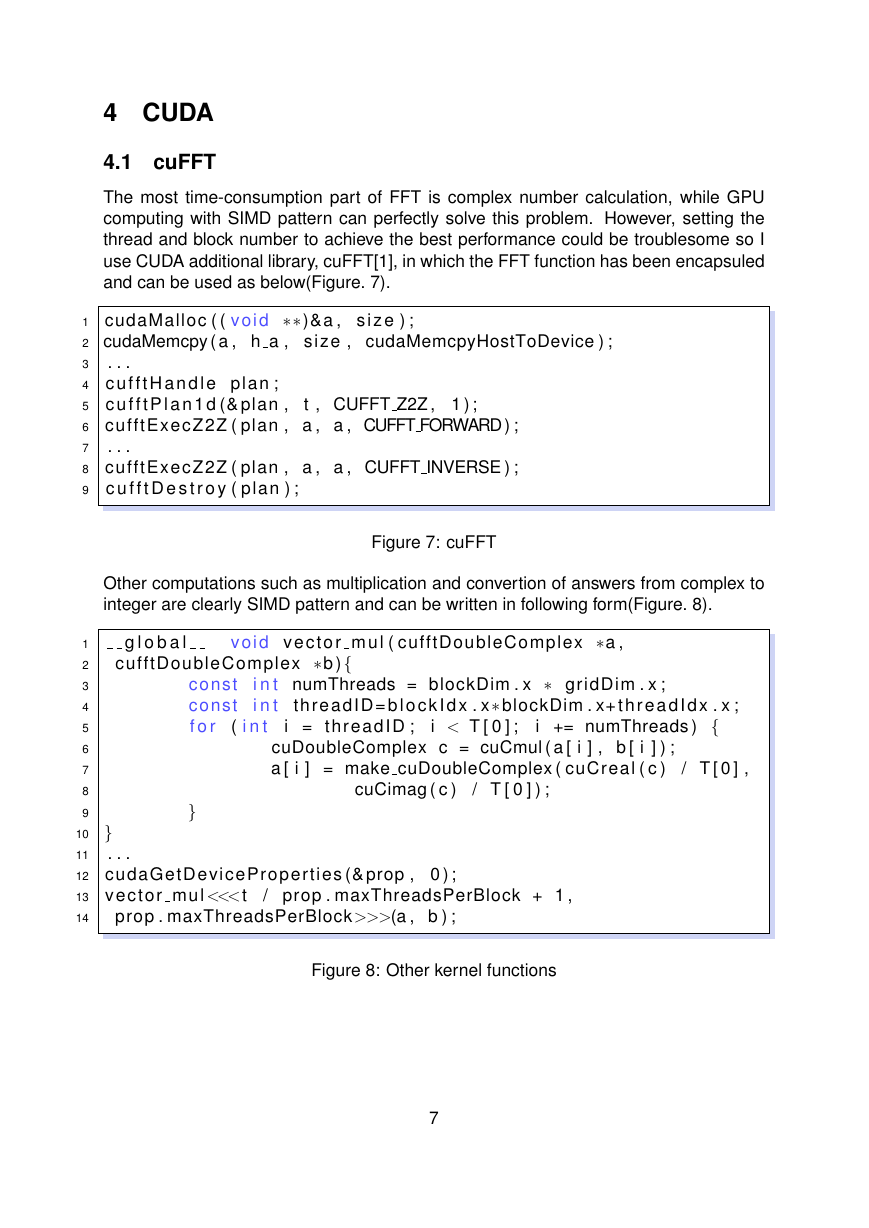
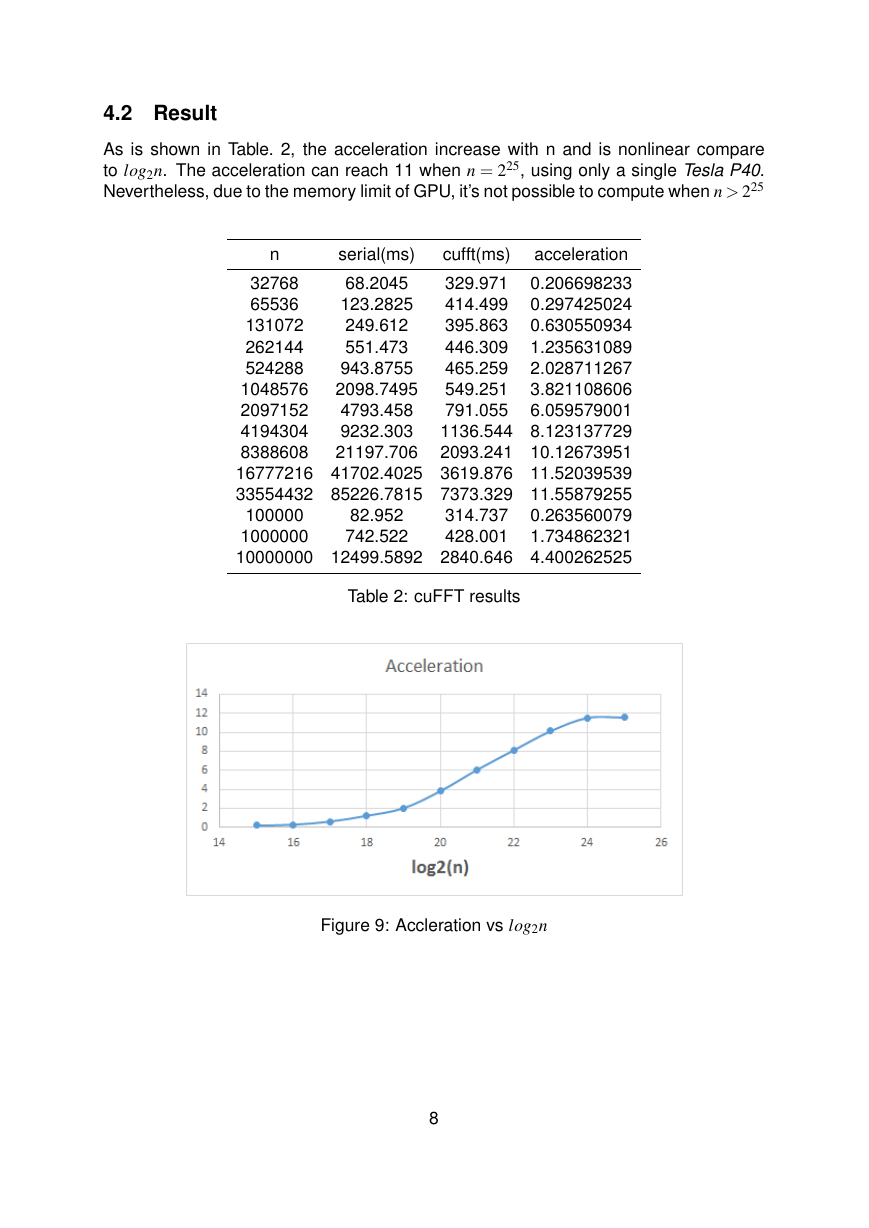








 2023年江西萍乡中考道德与法治真题及答案.doc
2023年江西萍乡中考道德与法治真题及答案.doc 2012年重庆南川中考生物真题及答案.doc
2012年重庆南川中考生物真题及答案.doc 2013年江西师范大学地理学综合及文艺理论基础考研真题.doc
2013年江西师范大学地理学综合及文艺理论基础考研真题.doc 2020年四川甘孜小升初语文真题及答案I卷.doc
2020年四川甘孜小升初语文真题及答案I卷.doc 2020年注册岩土工程师专业基础考试真题及答案.doc
2020年注册岩土工程师专业基础考试真题及答案.doc 2023-2024学年福建省厦门市九年级上学期数学月考试题及答案.doc
2023-2024学年福建省厦门市九年级上学期数学月考试题及答案.doc 2021-2022学年辽宁省沈阳市大东区九年级上学期语文期末试题及答案.doc
2021-2022学年辽宁省沈阳市大东区九年级上学期语文期末试题及答案.doc 2022-2023学年北京东城区初三第一学期物理期末试卷及答案.doc
2022-2023学年北京东城区初三第一学期物理期末试卷及答案.doc 2018上半年江西教师资格初中地理学科知识与教学能力真题及答案.doc
2018上半年江西教师资格初中地理学科知识与教学能力真题及答案.doc 2012年河北国家公务员申论考试真题及答案-省级.doc
2012年河北国家公务员申论考试真题及答案-省级.doc 2020-2021学年江苏省扬州市江都区邵樊片九年级上学期数学第一次质量检测试题及答案.doc
2020-2021学年江苏省扬州市江都区邵樊片九年级上学期数学第一次质量检测试题及答案.doc 2022下半年黑龙江教师资格证中学综合素质真题及答案.doc
2022下半年黑龙江教师资格证中学综合素质真题及答案.doc